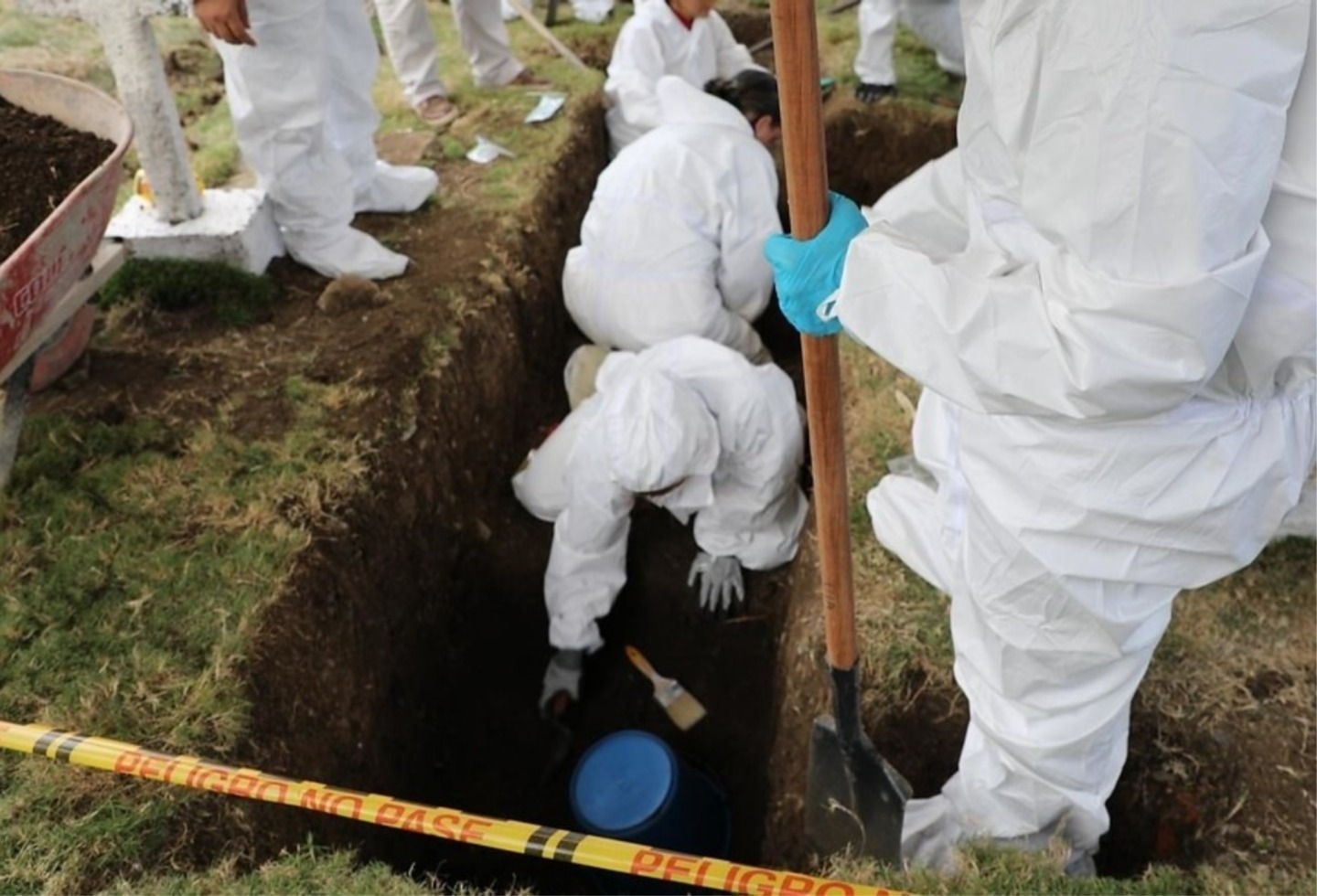
New mass grave found in Dabeiba, Colombia, speaks of the horror of State crimes
Last week the Special Justice for Peace excavated what could be Colombia's largest mass grave under State crimes known as "false positives”.
The river is sweet here
in Dabeiba
and carries red roses
scattered in the waters.
They are not roses,
is the blood
that takes other paths.
I knew about this poem by María Mercedes Carranza through Jesús Abad Colorado, who read it to me in the most moving interview I have ever done. That day he told me something more than made my blood go cold: in Colombia we have learned to know our geography by the name of the massacres. Then I knew of Dabeiba's existence.
Now, 22 years after the Dabeiba massacre, Carranza's poem returns to memory, because a team of forensic specialists and magistrates from the Special Justice for Peace arrived at its cemetery, Las Mercedes, to contrast the statements of a soldier, who narrated how the battalion to which he belonged murdered civilians, dressed them as guerrillas and mounted the scene of a supposed confrontation in combat.
According to the soldier's testimonies, which Semana magazine named Buitrago in its extensive report to protect both his integrity and that of the investigation, he participated in some 20 cases, while the documents of the Special Justice for Peace (JEP) estimate that there could be 50.
This macabre modus operandi was repeated in at least 29 of the country's 32 municipalities in the context of the Democratic Security policy of former President Álvaro Uribe Vélez which, according to the National Development Plan of his first term (2002-2006), consisted of "the exercise of effective authority, which follows the rules, contains and deters violence and is committed to respect for human rights and the protection and promotion of values, plurality and democratic institutions". Among several other considerations, it brought a great strengthening of the armed wing of the State and a system of rewards for the delivery of information, captures or casualties in combat.
These incentives, rest permits and congratulations on the resumes, led to what has been popularly known as "false positives" and the Special Justice for Peace (JEP by their acronym in Spanish) now investigates in its case 003, on "the deaths illegitimately presented as casualties in combat by agents of the State".
According to the testimony of soldier Buitrago detailed in Semana Magazine, in the case of Dabeiba, the battalion had trained some soldiers to recruit young people in the city of Medellín, 174 kilometers from Dabeiba, and then take them to one of the mountains surrounding the cemetery and execute them there with a shot to the chest or head.
RELATED CONTENT
Then, while one team fired bursts of fire to set up the scene of a combat with the guerrillas, another team lowered the corpses to the cemetery, dressed them and even anointed their hands with gunpowder, after which it was recorded in the necropcia that they had "died in combat" and proceeded to lay the mass graves, along with the gravediggers. Among the victims of this operation, according to the soldier Buitrago, was a disabled man, who had a paralyzed left side of his body and suffered from epilepsy, a street dweller in drug addiction and a minor of fifteen years of age.
This complex system would have been transmitted from one military unit to another and thus disceminated by the country, through the transfer of militia specialized in the execution of these murders and their concealment as deaths in combat that, even, took courses of judicial police for this purpose.
A bird
black sigh
the leftovers of
life.
It could be God
or the killer:
it doesn't matter anymore.
María Mercedes Carranza wrote this poem, probably as a result of the massacre that took place on 1 June 1993 in the municipality of Soacha. Today, December 16, 2019, a new testimony of a soldier specialized in the execution of murders presented as deaths in combat in that same place is made public. His role was to organize the corpses of the massacred youths to coincide with the narrative of the planned combat. Among the most surprising details is the revelation that they were made to sign to know if they were right-handed or left-handed and consequently to implant a weapon.
In Soacha, the mothers of the victims of these deaths illegitimately presented as casualties in combat by agents of the State have been organized for eleven years, resisting and struggling to find their children, as well as for justice and the clarification of the truth. This is the message they send to the mothers of the people who are currently digging up in Dabeiba:
Oramos por las madres de los muchachos que aparecieron en esas fosas comunes. Sabemos que es un alivio encontrarlos, pero también un dolor que nos entierra con ellos. Mamitas, aquí estamos si nos necesitan.











LEAVE A COMMENT: